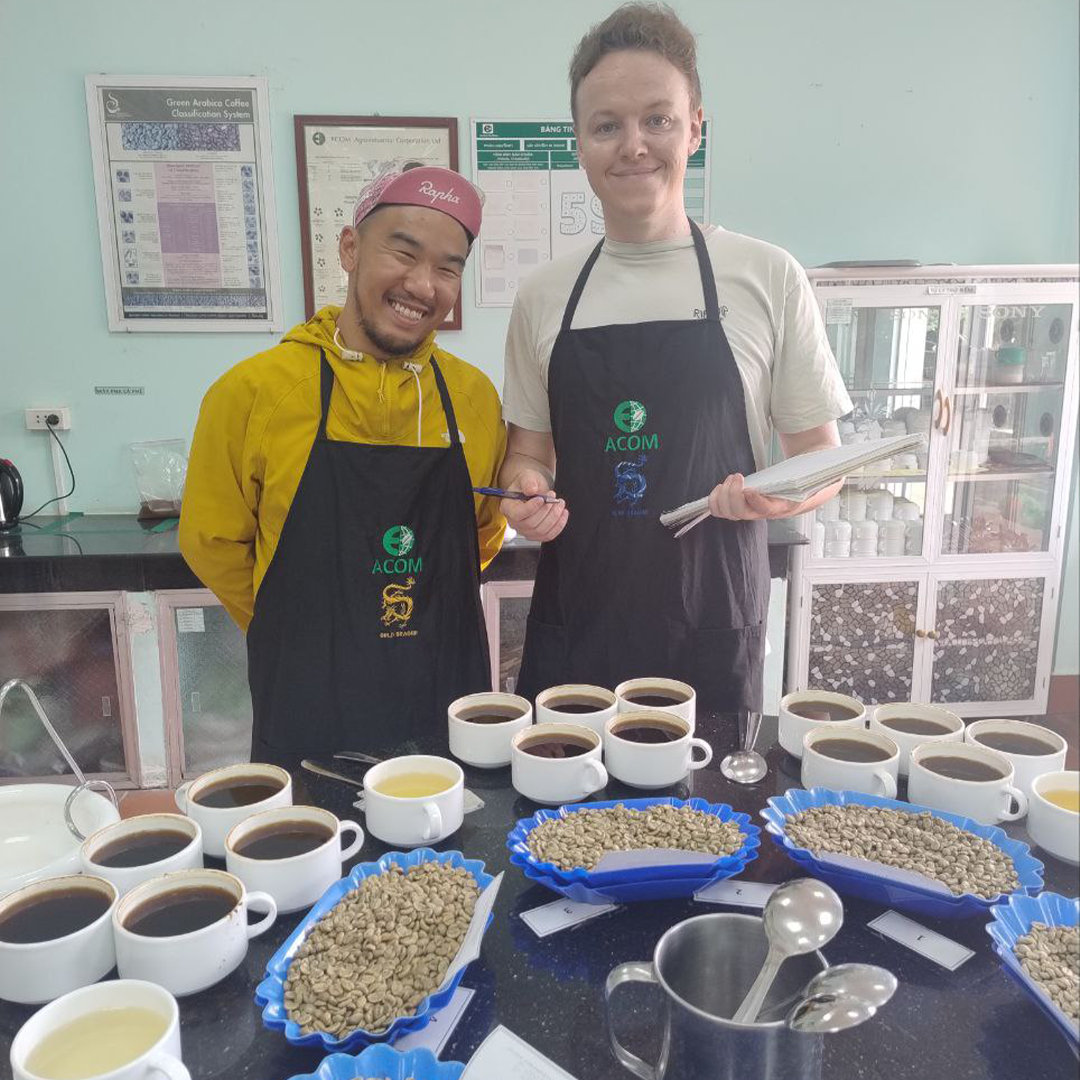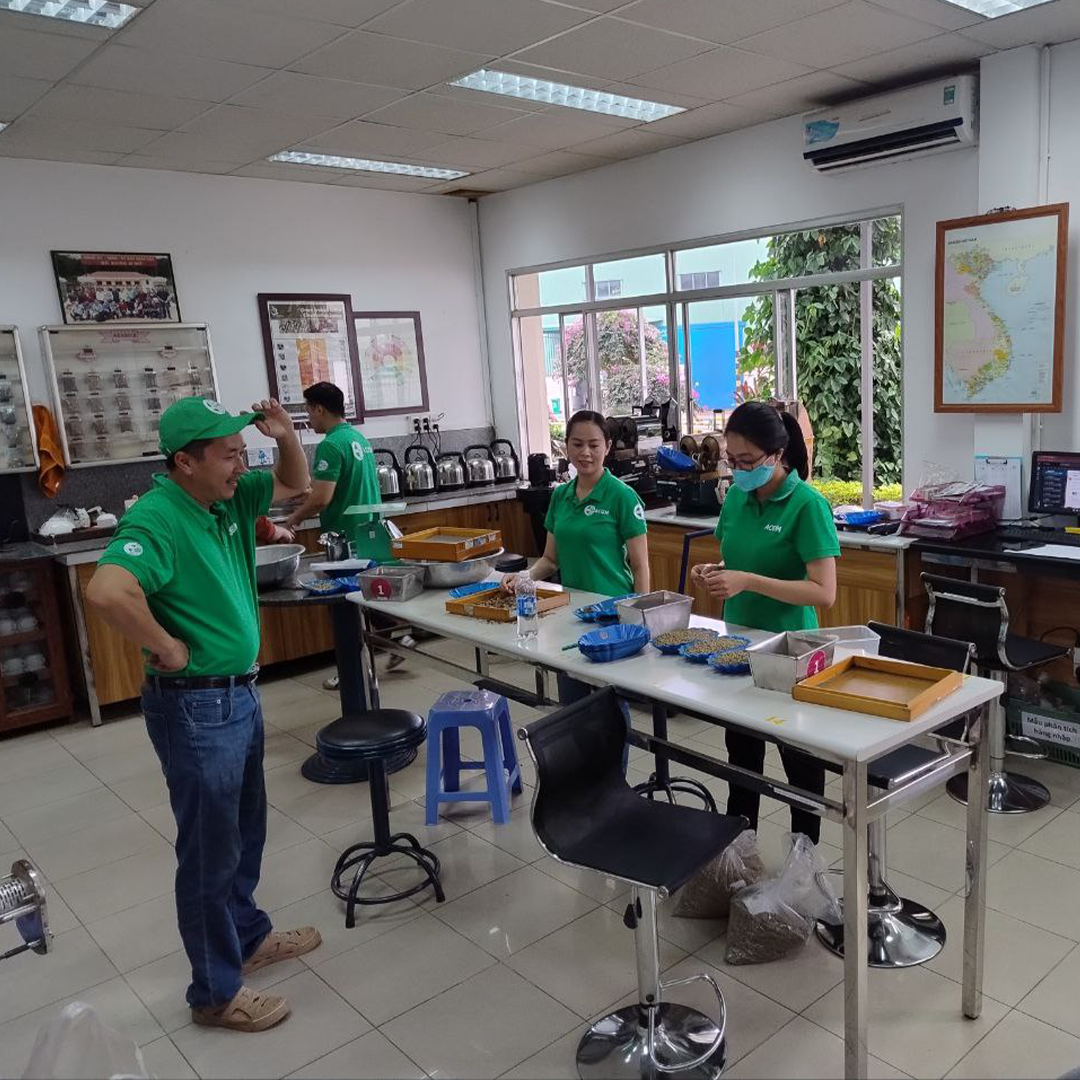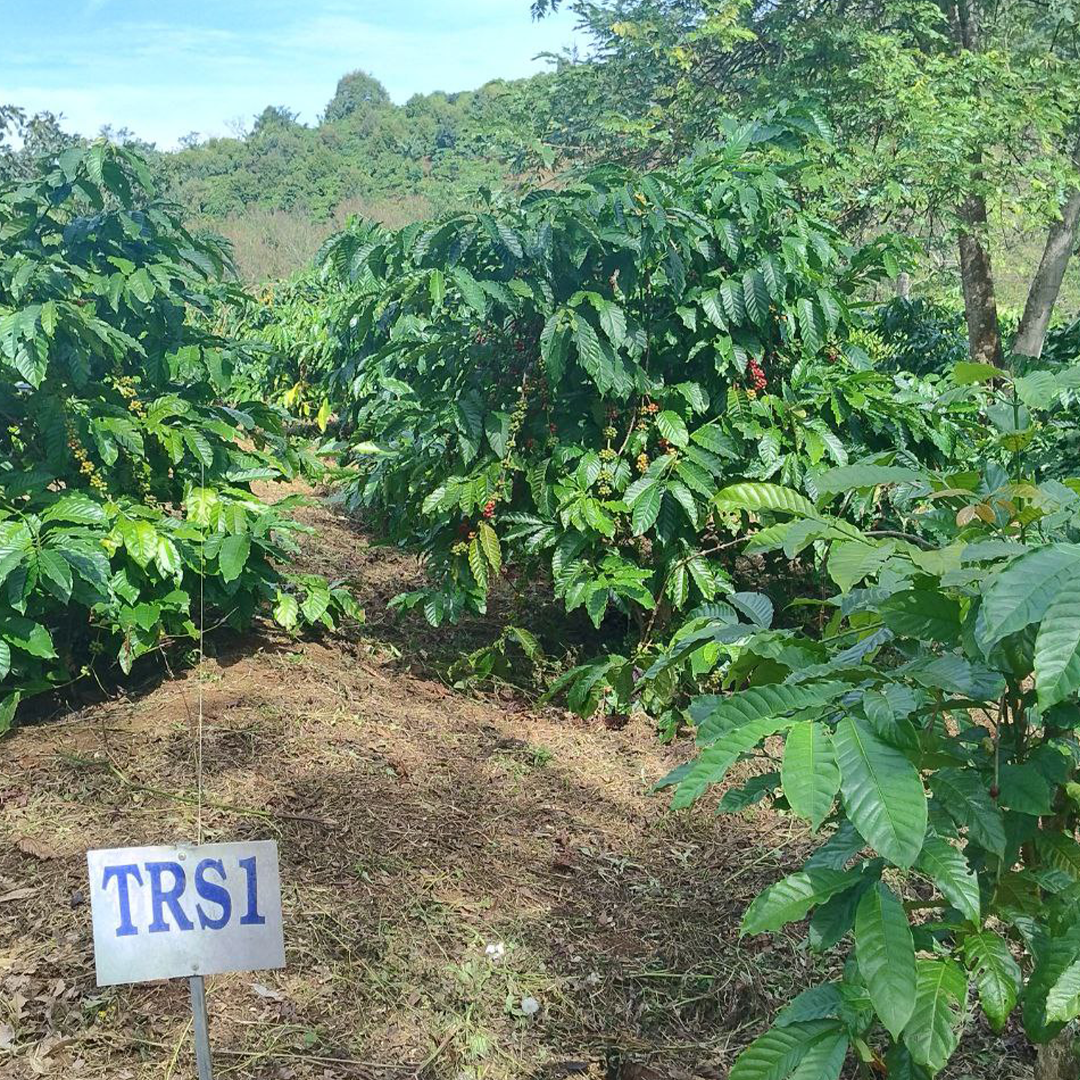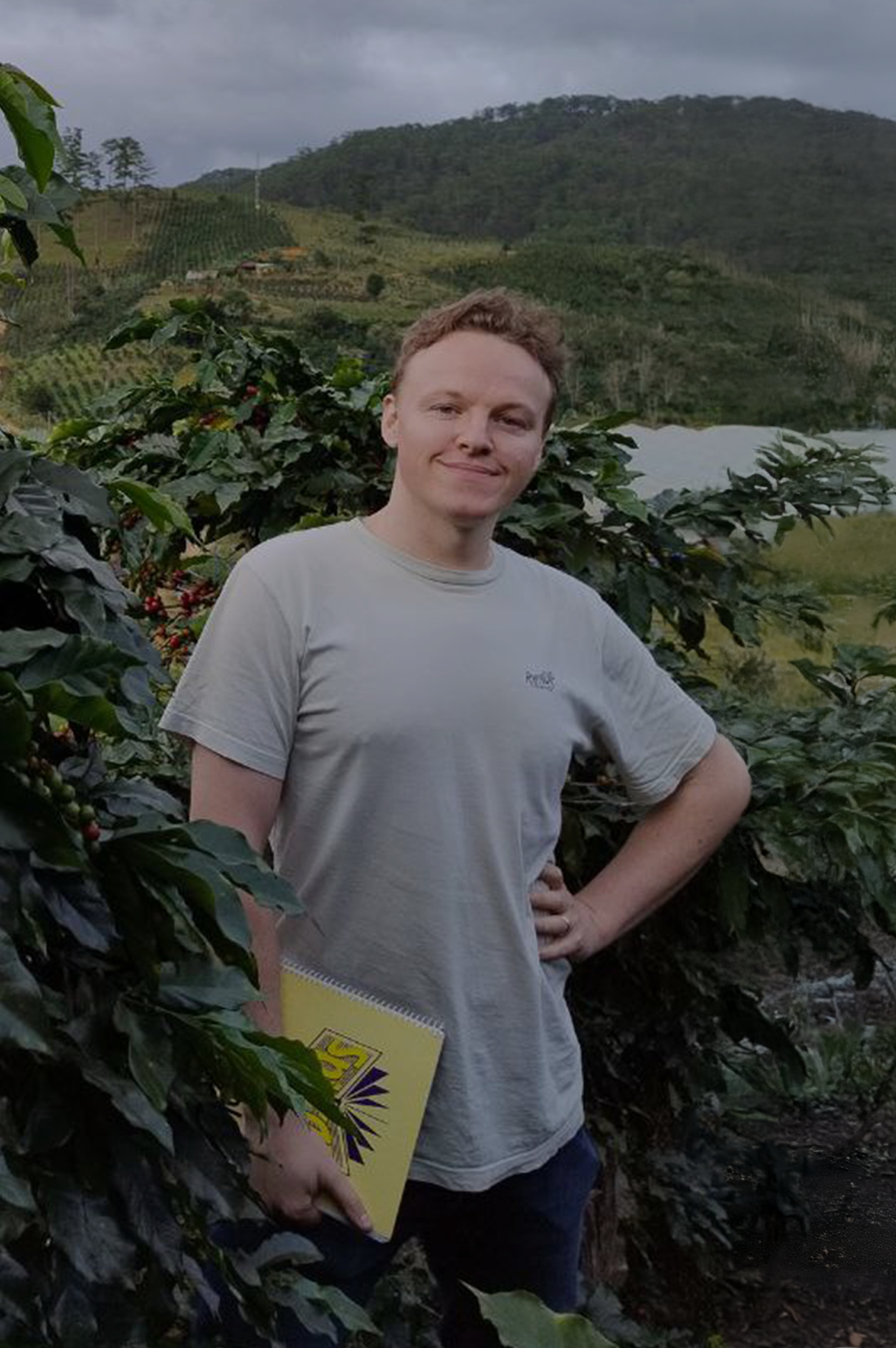Vietnam might be best known for its legendary cuisine and the hordes of motor scooters, but it's also one of the biggest coffee producers on the planet. I travelled to the highlands to see what the buzz was about, drink too much coffee and find out whether Vietnam’s arabica could hold its own.
Spoiler: it can.
A coffee giant in our midst
Vietnam is also an economic powerhouse. Reforms in the 1980s loosened state control, opened up trade and brought in foreign investment. Since then, the country has enjoyed one of the fastest growing economies in the world, known for electronics, textiles and agriculture.
And, of course, coffee.
No prizes for guessing which industry we’re diving into today on the Drink Better Coffee blog.

In case you’ve missed the headlines, the price of coffee beans has hit an unprecedented high in recent months, approximately doubling and then some in the last year. Broadly speaking, this has had a destabilising effect on the coffee industry with farmers, traders and roasters all swept up in the chaos of a turbulent global market.
Vietnam is the world’s second largest coffee producer after Brazil. But when it comes to robusta, they lead the pack. Over 95 percent of the coffee grown in Vietnam is robusta, giving the country a strong identity in that market. But there’s more to the story. Vietnam grows arabica too. Good arabica. I went to find it.
Read Green coffee update (February 2025) and what it means for Australia
Arabica vs Robusta: A quick refresher
Arabica (Coffea arabica) and robusta (Coffea canephora) are the two main coffee species. Within each, there are varietals with their own quirks and flavour profiles. Arabica is known for its complexity and fruitiness. Robusta is the scrappy younger sibling. Tougher, higher in caffeine, often more bitter and earthy.
Most specialty roasters, including Pablo & Rusty’s, use arabica or hybrids only. That’s partly because of its flavour, but also because robusta still carries a bit of a stigma. Fair or not, it’s often seen as lower quality. That being said, we are always looking for the best tasting coffee while also considering its story and impact. So we are always open minded and excited about what the future may hold.
Read Coffee Species: Arabica, Robusta and others and Caffeine in different types of coffee
The central highlands
High in Vietnam's central highlands is the city of Da Lat, the capital of the Lam Dong province. Founded as a resort in the 1890s by the French, who likely appreciated a break from Vietnam's otherwise tropical climate, it remains to this day a beautiful place to take a break. Surrounded by pine forests, lakes and mountain views, the city's European style architecture stands as a reminder of its colonial heritage. There are many affectionate names for Da Lat, but one that sticks out to me is 'the city of eternal spring' after its year-round temperate climate. Not just a pretty place, Da Lat also has the best conditions for growing arabica in Vietnam.
Good arabica needs altitude to slow the development of the coffee cherry, giving more time for complex flavours to develop. At 1500 metres above sea level and being close to the equator, the coffee trees receive strong sun year-round without having to worry about temperatures going below zero. Vietnam's central highlands are a great place to be if you're an arabica tree.

Meeting Marian at Zanya Coffee
It was in Da Lat that I had the pleasure of meeting Marian from Zanya coffee, a true coffee boffin. Marian emigrated from Slovakia seven years ago knowing nothing about coffee, married into a family of coffee farmers, and as far as I can tell, hasn't taken a day off since. He has taught himself to roast, digested a mountain of coffee literature and built an impressive processing facility to handle coffee cherries from his network of relatives.
Marian and his wife process coffee cherries to an uncompromising standard and in various styles ranging from conventional to experimental. Processing is a term for anything that can be done to a coffee cherry after it has been picked to improve or manipulate the flavour. Some processes are very simple, like the natural process where you just leave the cherries to dry out and ferment in the sun, to the anaerobic natural where you deprive it of oxygen sometimes for weeks at a time to deliver intense and complex fermented flavours in the cup. It gets ludicrously more elaborate than that too. Somebody reading this may be judging me for not knowing about the yeast inoculated double washed dark room dried carbonic macerated quintuple fermented process or some similar technical triumph.
At Zanya their offerings include the classics such as washed, natural, honey, black honey, a Kenyan style double washed, as well as various aerobic and anaerobic ferments. I even glimpsed a lavender infused coffee which for reasons that are a mystery smelled faintly of cinnamon as it lay drying on beautiful new raised beds in the sun.
I tried arabica of the Catimor variety in 8 different processes, each presenting a different flavour, highlighting a different aspect of what can be achieved with skill and patience. Cupping at Zanya was an eye-opening experience and they should be very proud of what they have accomplished.
The story of Catimor
The majority of arabica trees in Vietnam are Catimor. It's disease resistant, has a high yield, a hardy root structure and thrives in the central highlands. It owes its name to its parents: South America's Caturra and the Timor Hybrid, from East Timor. Caturra is an arabica, while the Timor Hybrid is one-part arabica and one part robusta. How is it that an arabica and a robusta had a baby if they're different species? Great question, nobody knows. The important thing to remember though, is that in Catimor's family tree, one of the grandparents is a robusta. To some people (mostly snobs), that's a problem.
However, just because a coffee has robusta genetics does not necessarily mean it has robusta flavours. A common theme with Catimor is some nuttiness and earthiness on the finish. This is not necessarily bad, especially if it can be balanced out by fruity sweetness and acidity as was the case with the coffees I had at Zanya. Catimor is not Gesha, but does everything have to be Gesha? Catimor has its own charm. When it’s grown, processed and roasted well, it has plenty to offer the coffee enthusiast and is interesting in its own way.

Farms and future varieties
After visiting Zanya, I toured other farms in the region. Most were growing Catimor, but I also saw Typica and Yellow Bourbon, a Brazilian varietal that excels at high altitudes.
These coffees sell well locally, especially to high-end roasters looking for something different. I even spotted Marsellesa trees still too young to produce fruit. Farmers are experimenting and that’s a promising sign. If these trials pay off, we might be seeing some Vietnamese grown gems hitting cupping tables around the world soon.
Many farms also grow fruit trees alongside coffee. Jackfruit, durian, persimmon, avocado and stonefruit of various descriptions. It helps diversify income and spreads the risk. Smart farming and good for the soil too.
By this point, I had developed some real affection for those sturdy Catimor trees. They may not be flashy but they hold their own.
Coffee farming is hard work
Like in many parts of the world, coffee cherries in Vietnam are picked by hand often on steep hillsides. This year with prices so high, even average cherries are fetching a good return.
That sounds like good news but it’s not the full picture. When the price is high, there's less incentive to do the careful work of picking only the ripest cherries, which can lead to a drop in quality. When the quality drops inevitably the price falls. That’s the way it usually works, but the price at the moment is in uncharted territory.
Some farmers are locked into contracts that were signed before prices jumped. That means they miss out on the gains. Others are tempted to break contracts and sell at spot rates. This causes tension up and down the supply chain, from farm to roaster. However, anyone who had a harvest this year and wasn’t locked into a contract is having a very good year. It’s hard not to be happy for them.
Read Green coffee update (February 2025) and what it means for Australia
What about Robusta?
Historically, arabica and robusta prices have moved independently. Arabica has always fetched more, while robusta will always find a home somewhere.
Lately, that price gap is closing. As arabica becomes more expensive, robusta prices have risen too. The industry is starting to explore where robusta might step in. Substitution is on the table. There are questions, experiments and more than a little speculation.
Watch this space. We are excited about what the future holds at the same time we will never settle for anything less than delicious and world changing coffee.

Final thoughts
I saw a lot during this trip. I tasted incredible coffee and was impressed by the skill and knowledge of the locals. My view of Catimor changed completely and I saw a coffee industry on edge, trying to adapt to a price rollercoaster.
If the price stabilises next year, there will be room again to chase quality over quantity. If that happens, Da Lat could become a serious player in the specialty arabica world. Maybe I was just there a little early. Or maybe I’ll be smugly telling people in five years that I saw it all coming.
Either way, it was a trip worth taking. I learned a lot and I hope you did too.
And if you’re curious about what really great arabica can taste like, check out our Expedition Program. There’s a beautiful Gesha waiting for you.
Read The rising price of delicious coffee (and why it’s worth it)



